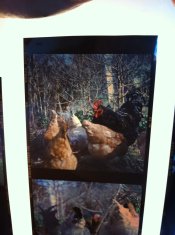T-grain
Member
- Joined
- Jan 15, 2011
- Messages
- 84
- Format
- Multi Format
few days ago Will posted these interesting photos of his 2-stop pushed Ektar (there was a url link here which no longer exists)
so I thought it would be nice to find out also other processing variants people did. I was surprised- I found another pushed processed and a crossprocessed Ektar example, and the outcome is like having a completely different film! A side-by-side comparison is shown on my blog:
http://theanalogphotographer.blogspot.com/2012/07/film-matter-schizophrenic-ektar.html
I think it's just good to know Ektar offers us these interesting options as well
so I thought it would be nice to find out also other processing variants people did. I was surprised- I found another pushed processed and a crossprocessed Ektar example, and the outcome is like having a completely different film! A side-by-side comparison is shown on my blog:
http://theanalogphotographer.blogspot.com/2012/07/film-matter-schizophrenic-ektar.html
I think it's just good to know Ektar offers us these interesting options as well












 . This is something which is often done in film forums - talking about colour qualities of film by just showing non colour-managed scans - but it is basically "not very" meaningful an exercise.
. This is something which is often done in film forums - talking about colour qualities of film by just showing non colour-managed scans - but it is basically "not very" meaningful an exercise.
